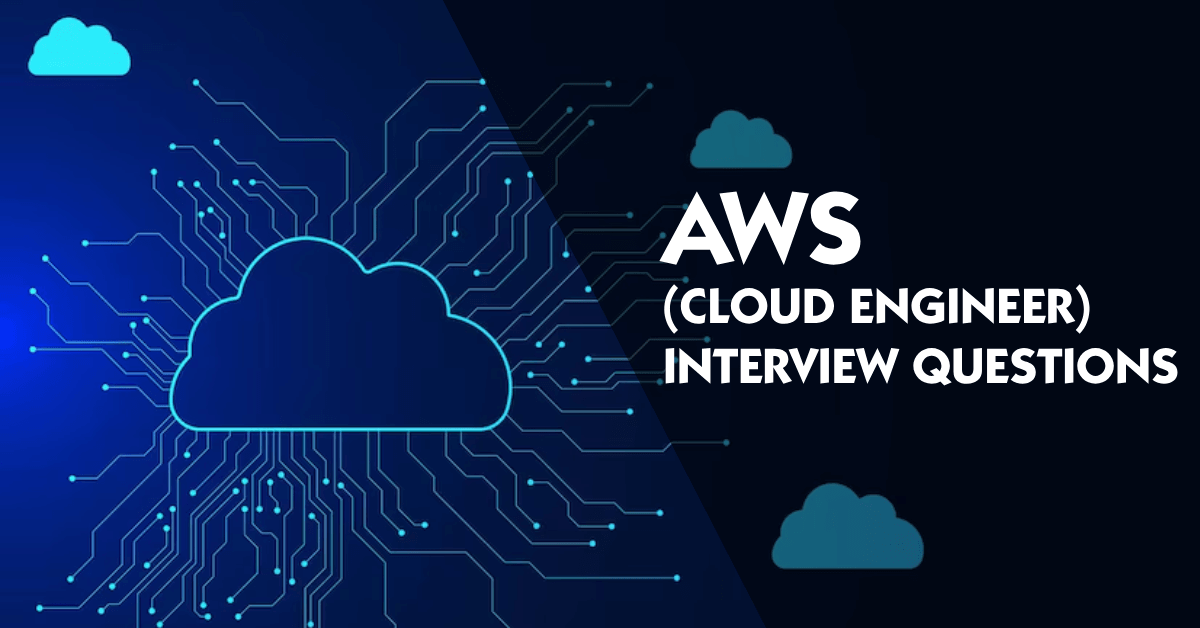1. What is AWS?
They said that AWS actually means Amazon Web Services. It is a web console that offers simple, easy to manage, self-service cloud computing. It is flexible and elastic in nature and is charged under a pay-as-you-go model. AWS offers several service types, such as Infrastructure as a Service (IaaS), Platform as a Service (PaaS), and Software as a Service (SaaS).
2. What are the features of Amazon CloudWatch?
In AWS CloudWatch, we can monitor AWS resources and activities. We can monitor various components or infrastructure services such as CPU Utilization, EC2, Amazon RDS instances, Amazon SQS, SNS, S3, and Load Balancer, etc. With AWS CloudWatch we can create a dashboard where we can visualize all resource activities.
Also, We can set metric-based trigger alarms for alert purposes.
3. Describe AWS availability zones and regions.
While using the AWS console the terms availability zones and regions should be familiar to us. So, as said before, while creating any resource we have to ensure about availability zones vs regions. There are more than two regions and Availability Zones. Availability Zones are distinct areas where your infrastructure will take place like all physical hardware like own power, cooling, and networking infrastructure will situated.
Just as an availability zone encompasses multiple regions to limit redundancy and fault tolerance for web applications requiring low-latency, high-throughput connections, a region can be defined as a data center that maintains the infrastructure controlling the application or code deployment.

4. What is AWS Lambda?
AWS Lambda is a serverless compute service provided by Amazon on a pay-per-use basis devoid of any required infrastructure. It allows the execution of various codes, including but not limited to AngularJS, Python, and Java, which can be deployed in real-time to handle multiple applications. Moreover, Lambda enables the creation of several workflows for applications, such as instance scheduling, where any API can be used for Java or Angular applications, billed solely for resources consumed.
5. Define Amazon DynamoDB.
What are the different types of load balancer available with AWS?
What is Amazon CloudFront and how does it fit its role in cloud computing?
How can I provide an Amazon EC2 instance permission to access an Amazon S3 Bucket?
What is AWS RDS Service and why is it preferred?
6. What Are The Main Parts Of Aws?
These are some of the main parts of AWS:
– Domain Name System (DNS) web service
– E-mail Service
– Database Management
– Access Management
– Simple Storage Service
– Elastic Compute Cloud
– Elastic Block Store
7. Why is buffer important in AWS?
Buffer in AWS helps with the Balancing of the components helping to orchestrate and control the speed of the system and allows processes to be run in parallel with their requests. It helps to maintain efficiency inisde the system.
8. What are the guidelines set in to control data security in the cloud?
In terms of how data can be stored securely in the cloud, the guidelines are:
To Encrypt, use cloud services.
Pay attention to user agreements.
Establish strong privacy settings and strong passwords.
Do not share or store personal information.
Two-factor authentication is a must.
The anti-malware program is efficient.
9. List The Levels Of Cloud Computing
The layers of the cloud computing platform include Infrastructure as a Service (IaaS), Platform as a Service (PaaS), and Software as a Service (SaaS).
10. Describe If It Is Possible To Vertical Scale An Amazon Instance. If So How?
Vertical scaling is possible by increasing the capacity of EC2 instances to accommodate growing needs of the application. Vertical scaling involves adding more power (CPU, RAM) to the existing machine.
11. What Are The Components That Make Up Amazon Web Services?
Some of the different components of AWS include:
– Amazon Cluster
– Storages
– Databases
– Management and security
– Networks
– Application services
– Implementation and managment
12. What Is The Difference Between Scalability And Flexibility?
Scalability refers to a system’s ability to increase the workload placed on its hardware resources and sustain a variable workload, while flexibility refers to a system’s ability to decrease workload on hardware resources.
13. What Are The Different Types Of Events Triggered By Amazon Cloud Front?
Different types of events triggered by Amazon CloudFront include Viewer Request, Viewer Response, Origin Request, and Origin Response.
14. What are the components of Amazon VPC?
How does AWS perform elasticity and scaling management?
15. What Is An Ami ? How Do I Build One?
An Area Median Income (AMI) is the data released by the U.S Department of Housing and Urban Development in regards to the Median Income of a certain area.
To create an AMI from an Amazon EC2 Instance
Select an instance to serve as the AMI source, then right-click on it and select Create Image from the context menu. Create Image context menu.
In the Create Image dialog, provide a distinctive name and description under the corresponding fields, then select Create Image.
16. What are the Principal Features of Amazon Cloud Front?
The principal features includes, but not limited to, high level of security with the Content Encryption, GEO directed aid for delivery of certain content, HTTP or HTTPS use at a lower cost.
17. What is the EC2 Service from Amazon?
Assured security and reliability is provided alongside elasticity through Amazon’s diverse set of EC2 instance types for different workloads on the Elastic Compute Cloud.
18. What Are The Features Of The Amazon Ec2 Service?
Below is the compilation of AWS Interview Questions newly posed in Accenture for both Entry-level and Experienced positions. These questions have been included for candidates of all levels. All of these questions have been addressed in our AWS Training.

